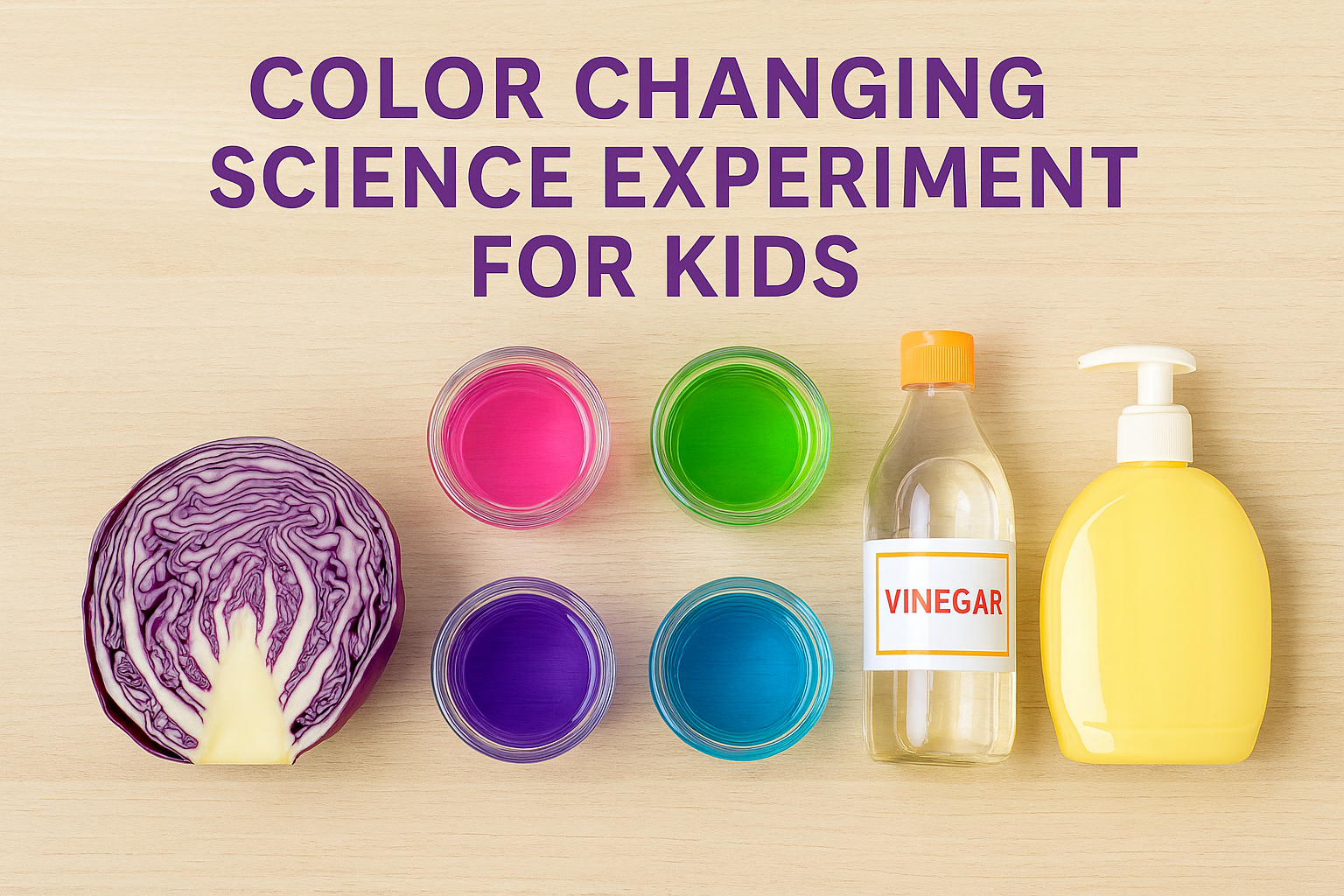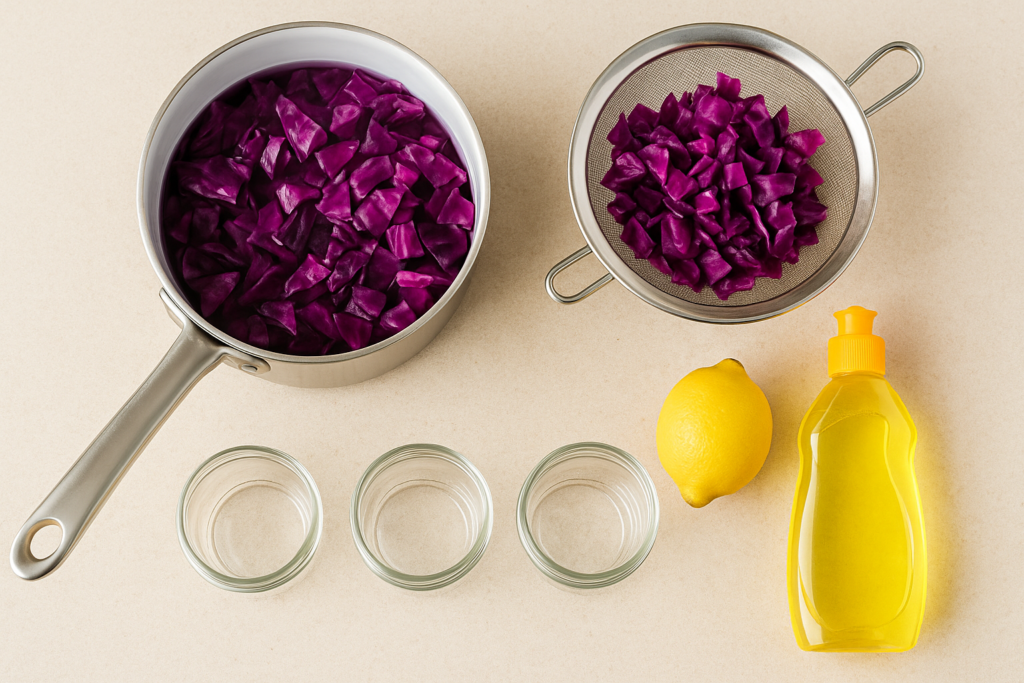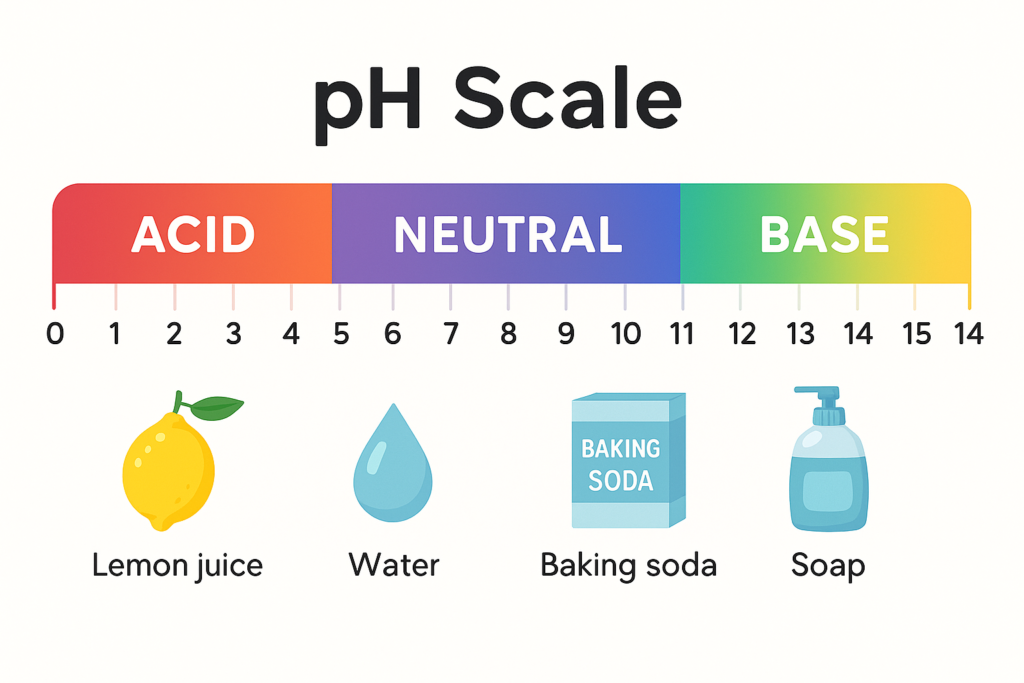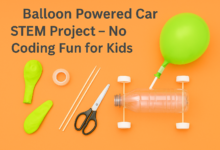Red Cabbage pH Experiment for Kids: Acids & Bases

Have you ever tried a red cabbage pH experiment for kids where a purple liquid turns bright red or green in seconds? Well, it’s not magic — it’s science!
In fact, it’s one of the most exciting and simple chemistry experiments for kids that you can do right at home. And best of all, the secret ingredient? A red cabbage.
This fun and colorful red cabbage pH experiment for kids lets children explore real chemistry by testing household liquids with a natural pH indicator. It’s a perfect color changing science experiment for curious young minds, designed to make learning about acids and bases visual, safe, and exciting.
To begin with, this article will show you how to create a natural pH indicator using red cabbage and how to use it to test different household liquids.
As a result, this hands-on activity becomes a fun and educational way for children aged 6 to 12 to explore basic chemistry concepts through color-changing reactions.
Whether you’re a parent, homeschooler, or teacher, this is an easy, safe, and exciting method to spark curiosity in science.
A Fun Intro for Kids
PH is a scale scientists use to figure out if something is acidic, neutral, or basic (alkaline). Here’s a simple way to understand it:
- Acids: Sour things like lemon juice and vinegar
- Bases: Slippery things like baking soda and soap
- Neutral: Balanced, like pure water
The pH scale ranges from 0 to 14. Acids are lower on the scale (closer to 0), bases are higher (closer to 14), and neutral sits right in the middle at 7.
Now, instead of just hearing about pH, kids can see it in action through a color-changing science experiment. That’s where red cabbage comes in!
How to Do the Red Cabbage pH Experiment for Kids
This red cabbage pH experiment for kids uses a natural pigment called anthocyanin, which changes color depending on the pH level of what it touches.
Here’s what you’ll need:
- ½ head of red cabbage
- Hot water
- A blender or a pot for boiling
- A strainer or sieve
- Clear cups or jars
- Household test liquids: lemon juice, vinegar, soap water, baking soda water, cola, tap water, etc.

Instructions:
1:Chop the cabbage into small pieces.
2:Blend it with hot water, or boil it for 10 minutes. Let it cool.
3:Strain the purple liquid into a container ,this is your natural pH indicator.
4:Pour a small amount of the cabbage juice into each cup.
5:Add different liquids into each cup, one at a time, and watch the colors change!
For more red cabbage science fun, check out this kid-friendly version of the experiment on Little Bins for Little Hands.
Kids will love seeing the rich purple turn to pink, green, or even yellow depending on the liquid’s pH level.
Is the Red Cabbage Experiment Safe for Kids?
Yes — this experiment is safe for children. All ingredients are non-toxic and commonly found in kitchens. Still, here are a few tips:
1: Supervise young children, especially when handling hot water or glass jars.
2: Wear aprons or old clothes (cabbage juice can stain!)
3: Don’t taste or drink the test liquids or cabbage juice
With these simple precautions, this red cabbage pH experiment for kids is a great indoor activity to try at home or in class.
Why the Red Cabbage Changes Color – The Science Behind the Experiment
When you add a substance to the red cabbage indicator, the anthocyanin reacts based on the pH of the liquid:
1: Acidic liquids (like lemon juice or vinegar) turn it pink or red
2: Basic liquids (like soap or baking soda) make it turn blue, green, or yellowish
3: Neutral liquids (like water) keep it purple

This chemical reaction is a simple way to visualize the invisible world of acids and bases — and it’s safe, exciting, and completely kid-friendly.
PH Art Project
Turn your science lesson into an art project! Here’s how:
1: Use watercolor paper or coffee filters
2: Paint the paper with cabbage juice using a brush or sponge
3: Then use a cotton swab dipped in lemon juice, baking soda water, or soap to draw or write messages
4: The colors will change as the acids and bases react on the paper
Kids can create color-changing artwork while learning about chemical reactions. It’s STEM + creativity = magic!
Real-World Uses of pH Science
This isn’t just a fun experiment .it introduces real science concepts with real-life applications. Here’s how pH is used in everyday life:
1:Doctors and nurses use pH testing in healthcare.
It helps them check for infections, dehydration, and other health issues.
2: Farmers and gardeners test soil pH to grow healthy crops.
3: Pool owners measure water pH to keep it clean and safe.
4: Food scientists monitor pH when making cheese, yogurt, pickles, and other foods.
5: Even in skincare, pH helps decide whether a product is gentle or harsh.
So when your child is experimenting with red cabbage juice, they’re getting a glimpse into the real world of science.
Want More Science Fun?
If you want more science fun, explore more on our blog:
10 Fun and Easy Homemade Science Experiments for Kids to Try at Home
Conclusion: Science in Every Color
This red cabbage pH experiment is more than just pretty colors — it’s a powerful way to teach children how the world works. For example, from acids and bases to real-world chemistry, your child is learning through discovery, not just memorizing facts.
Moreover, it’s fun, safe, and done with simple ingredients already in your home.
Therefore, the next time you see a red cabbage in your fridge, remember — a red cabbage pH experiment for kids could be the spark that turns your child into a young scientist.

